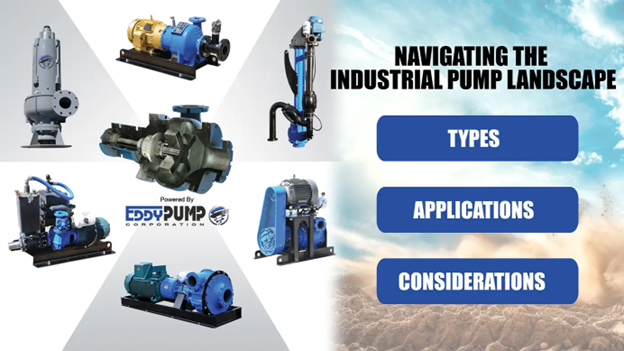
Introduction
In today’s high-demand resource economy, mining operations require robust and reliable systems to remain productive, safe, and cost-effective. Among these systems, one of the most critical—but often overlooked—components is the industrial pump. Specifically, slurry handling pumps have become the backbone of modern mining processes, where the constant movement of abrasive, dense fluids is essential to the transport of ore, tailings, and byproducts.
The complexity of slurry management in mining demands various pump types, each engineered for specific challenges. This article explores the vital role industrial pumps play in slurry handling, examines the consequences of downtime, and offers a breakdown of pump types that drive the mining industry forward.
The Critical Role of Pumps in Modern Mining Operations
Mining is not just about digging—it’s about moving materials efficiently. Whether it’s raw ore, processed concentrate, or waste tailings, the transportation of these materials requires constant fluid movement. Industrial pumps, especially slurry pumps, are vital for:
- Moving ore from extraction points to processing plants
- Transporting tailings to containment areas
- Dewatering pits and shafts
- Circulating process fluids in beneficiation plants
- Managing water in underground mines
In all these applications, pumps must contend with corrosive fluids, abrasive solids, high pressures, and demanding duty cycles. A single failure can halt production and trigger costly delays.
Why Slurry Handling Is the Lifeblood of Mineral Extraction?
Slurry handling is a fundamental component of mineral extraction, serving as the primary medium through which ore is transported, processed, and ultimately disposed of. This mixture of solids suspended in water or other liquids is essential in several critical stages of mineral processing. It facilitates ore movement from mining sites to concentrators via pipelines, supports the operation of grinding circuits by transporting crushed material through milling systems, and enables chemical processes such as flotation and leaching to separate valuable minerals from waste.
Additionally, slurry is used for the final disposal of tailings, whether in dams or dry-stack systems. Due to the abrasive nature of slurry—often containing sharp, dense particles—it poses significant challenges to traditional pumping systems. Efficient slurry management is therefore crucial not only for maintaining high throughput but also for extending equipment lifespan, reducing energy consumption, and minimizing operational downtime.
Downtime Impacts on Mining Operations & Productivity
In the mining world, time is money. Equipment downtime, particularly in pumping systems, leads to:
- Disrupted production cycles
- Excessive maintenance and repair costs
- Delays in ore processing and shipping
- Increased energy consumption from inefficient pumps
- Safety hazards due to backups or flooding
Downtime can quickly cascade across an operation, leading to both financial losses and environmental compliance risks. That’s why reliability and maintainability are top priorities when selecting slurry pumps for industrial mining applications.
Why Mining Needs Specialized Industrial Pump Solutions?
Mining operations require specialized industrial pump solutions due to the uniquely harsh characteristics of slurry—an abrasive, variable mixture that includes hard solids, fluctuating particle sizes, and diverse viscosities. Unlike standard industrial fluids, mining slurry rapidly wears down conventional pump components. As a result, pumps designed for mining must incorporate abrasion-resistant features such as thick casings and high-chrome alloys or rubber linings.
They also need to withstand chemically aggressive substances, tolerate high pressure for long-distance transport, and offer ease of maintenance, given the frequent need for inspections and part replacement. Additionally, site-specific variables like elevation, flow rate, and slurry composition often necessitate custom configurations. In such demanding environments, generic pumps are simply not viable; only purpose-built, robust solutions can ensure reliable and cost-effective performance.
Pump Types Breakdown
The mining industry employs several types of industrial pumps, each suited to a specific task:
a. Centrifugal Slurry Pumps
The most common type used in mining, centrifugal pumps use rotating impellers to impart energy to slurry. These are ideal for medium to high-flow applications and are available in horizontal and vertical configurations.
b. Peristaltic (Hose) Pumps
Peristaltic pumps move slurry by compressing a flexible hose. They offer high chemical resistance and can handle extremely viscous slurries without seals or valves—ideal for dosing or highly abrasive applications.
c. Submersible Slurry Pumps
Designed to operate underwater, these pumps are used for sump dewatering, pit cleaning, and slurry collection in wet environments. Their compact design and sealed motors make them useful in confined or submerged spaces.
d. Piston Diaphragm Pumps
These are positive displacement pumps that move slurry at high pressures with minimal shear. They are often used for tailings transport or backfilling underground mines.
e. Vertical Cantilever Pumps
Used in sumps or tanks, these pumps feature no submerged seals, making them excellent for corrosive or contaminated slurries that can degrade seals quickly.
Each pump type offers distinct advantages depending on the flow requirements, slurry composition, and system layout.
Extreme Duty Industrial Pumps for Key Mining Processes
Certain areas of mining call for “extreme-duty” slurry pumps. These are engineered for the most punishing environments, such as:
- Cyclone feed systems
- Flotation cell recirculation
- Mill discharge pumping
- Thickener underflow handling
- Long-distance tailings transport
In these cases, pumps must operate continuously under high solids concentration and severe wear conditions. Features like oversized shafts, high-efficiency impellers, and modular designs allow quick replacement of wear parts, reducing operational disruption.
Energy Efficiency in Industrial Slurry Pumping
Energy efficiency in industrial slurry pumping is critical, as these pumps are some of the highest energy consumers in mining operations. Enhancing efficiency not only reduces operational costs but also helps lower the overall carbon footprint. This can be achieved by selecting pumps that operate close to their Best Efficiency Point (BEP), which ensures optimal performance. Additionally, proper pipe sizing helps minimize frictional losses, while incorporating variable frequency drives (VFDs) allows pump speeds to be adjusted based on real-time demand.
Regular maintenance of impellers and casings is essential to sustain hydraulic performance, and upgrading to high-efficiency motors with low energy loss further improves overall efficiency. Given the rising cost of energy, even marginal improvements in these areas can result in significant long-term savings.
Conclusion
The modern mining industry could not operate without the dependable performance of industrial slurry pumps. These systems move millions of tons of abrasive, high-density material every year, making them central to productivity, profitability, and sustainability.
From centrifugal to peristaltic and submersible designs, each pump plays a unique role in the intricate process of mineral extraction. Choosing the right pump involves balancing flow rate, pressure, material durability, and energy efficiency. Moreover, maintaining uptime and minimizing wear are essential to achieving consistent throughput and meeting production targets.
As mines become deeper, operations more complex, and environmental regulations more stringent, the need for advanced, efficient slurry handling systems will only continue to grow. For mining companies, investing in specialized industrial pumps is not just smart—it’s essential.
Find a Home-Based Business to Start-Up >>> Hundreds of Business Listings.
















































